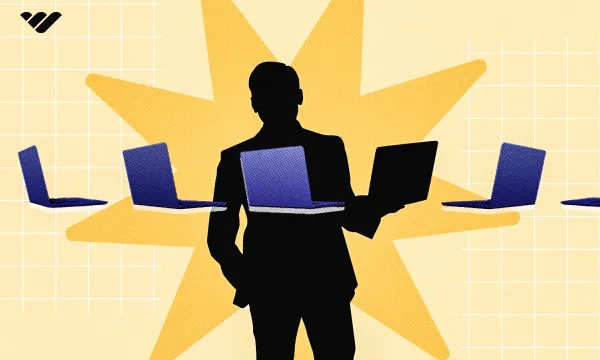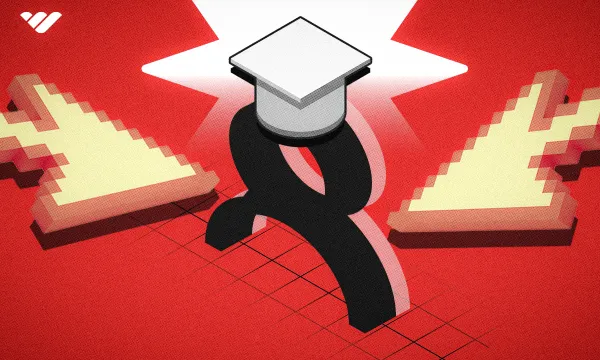Recently, I've been noticing smaller YouTube channels flooding my feed. These are channels with less than 1,000 subscribers in topics I'm interested in.
And I'm not the only one who is noticing this. YouTube channel 'Think Media Podcast' shared that they saw small channels in their feeds, and they were growing massively in a few short weeks.
With 30% of high school students wanting to start a YouTube channel, it's clear that the platform's reach and influence are expanding rapidly.
This year, I monetized a YouTube channel, and through this process, I learned key tactics for making money on YouTube. So, if putting YouTuber on your resume sounds fun, let's look at how to get monetized on YouTube and other ways to make money online.
How to Get Monetized on YouTube: Ads, Memberships, and Strict Guidelines
The holy grail of YouTube monetization is to:
- Get your channel to 1,000 subscribers
- Reach 4,000 watch hours
There are new monetization methods you can use, but before I go into the process of getting your channel monetized, the money your channel gets from Ads isn't all that it's cracked up to be.
I have another YouTube channel with 20,000 subscribers in a popular "make money" niche, and I barely make $300 per month.
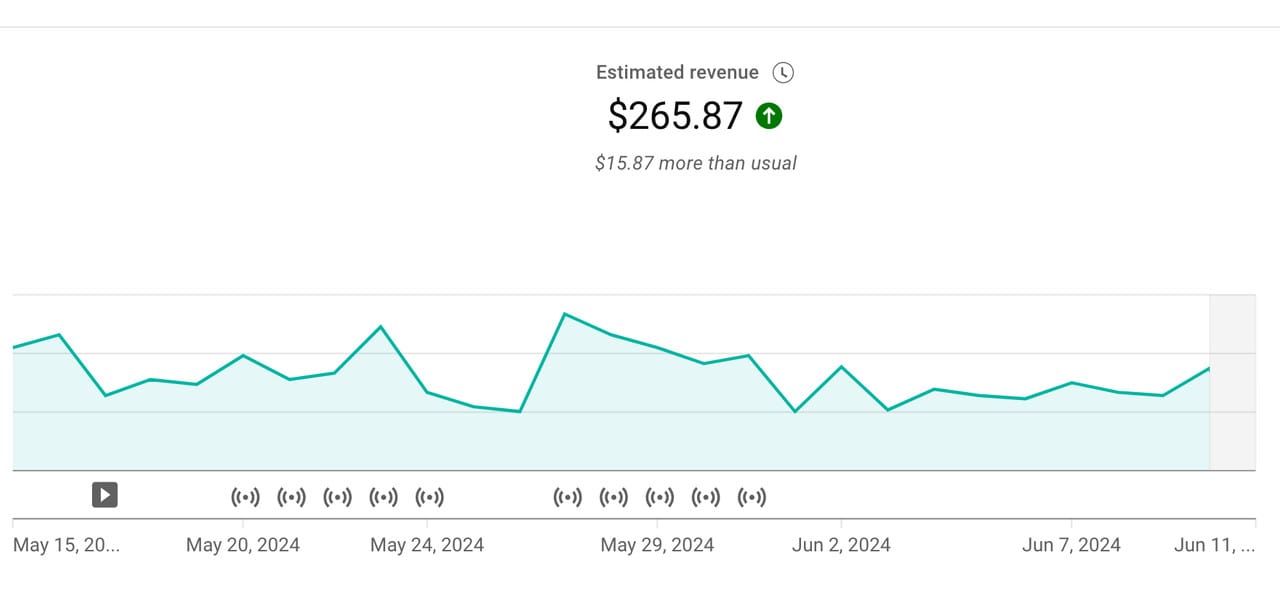
That's why it's important to incorporate other monetization methods into your YouTube strategy to have a profitable business.
The YouTube Partner Program
The YouTube Partner Program (YPP) is designed to allow creators to monetize their content through various revenue streams, such as ads, channel memberships, Super Chat, and more.
The platform allows creators to earn revenue from their videos by integrating with YouTube's advertising network and other monetization tools. But, make sure that you understand YouTube's strict guidelines for monetizing content before starting a channel.
Videos that include hate speech, violence, harassment, or sexually explicit material are not eligible. Also, the YPP might restrict anything in your videos that promotes misleading information, harmful acts, or excessive profanity. Creators need to follow these rules to stay in the YPP.
Even if you get accepted, breaking these rules can lead to demonetization. YouTube also requires that your content be original and that you respect copyright laws. So, re-uploading someone else’s videos or using clickbait can remove your channel from the program.
Further, YouTube is also pushing for more transparency about AI-generated content. On March 18th, YouTube updated its policies, requiring video creators to use AI tags in their content and informing audiences when AI is used. These tags apply to AI-generated visuals, such as realistic but fictional scenarios, and AI-manipulated human likenesses like deepfakes. AI-generated voiceovers must also be tagged as ‘altered or synthetic content.’
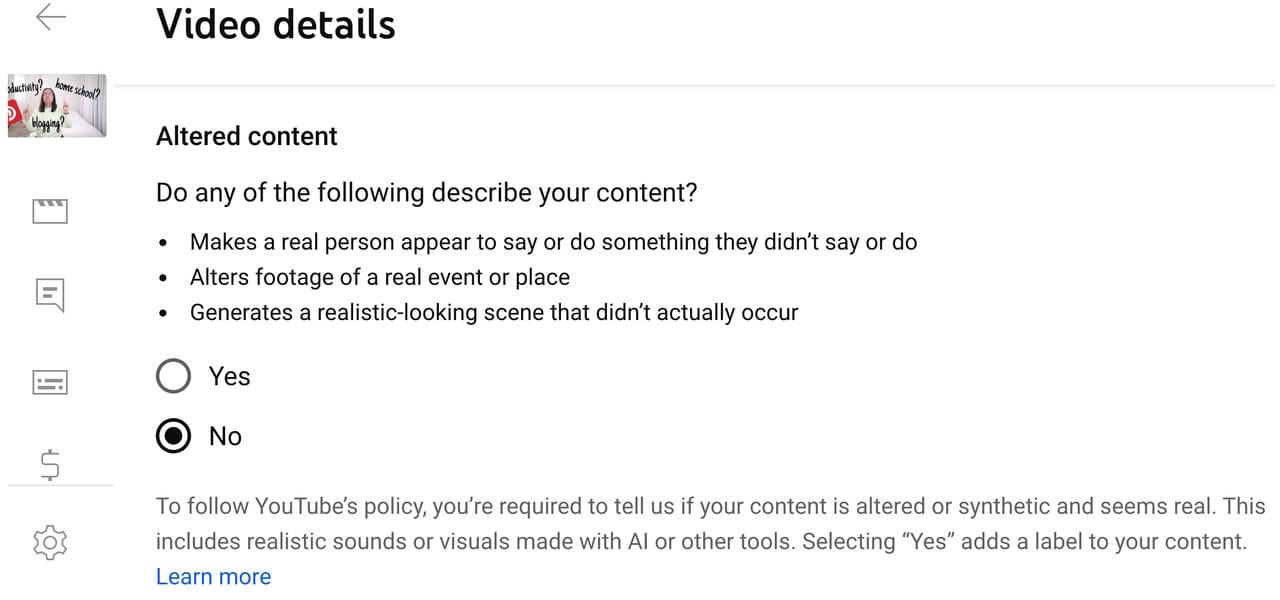
This update aims to enhance transparency around AI use but exempts certain AI applications, such as idea generation, scriptwriting, beauty filters, and special effects. YouTube uses a combination of AI and human moderation to detect violations and enforce these guidelines.
Non-compliance can lead to the platform adding the AI tag itself or, in severe cases, removing the content or the creator’s channel from the YPP, which means losing the ability to monetize. You can check YouTube's official announcements and updates for more details on these policies and their impact. Maintaining your channel's monetization status and keeping your audience happy requires following these rules.
Finally, if your video includes paid promotions or sponsorships, you must disclose that. This will keep the YouTube community trusting and comply with advertising regulations.
Youtube Monetization Requirements
Within the YouTube Partner program, there are two main methods for monetizing YouTube videos: ads or channel memberships.
YouTube Ads
For YouTube ads, your channel needs to hit 1,000 subscribers and 4,000 public watch hours within a 12-month period. This is a rolling 12-month period, meaning you need to gain more watch hours than your channel is losing.
You can check your eligibility in your YouTube studio under the Monetization tab.

You can earn from display ads on your channel when you've reached the requirements. The cost per 1,000 impressions (CPM) is how much advertisers will spend to show ads on your channel.
This number fluctuates wildly between niche industries and with each video you publish.
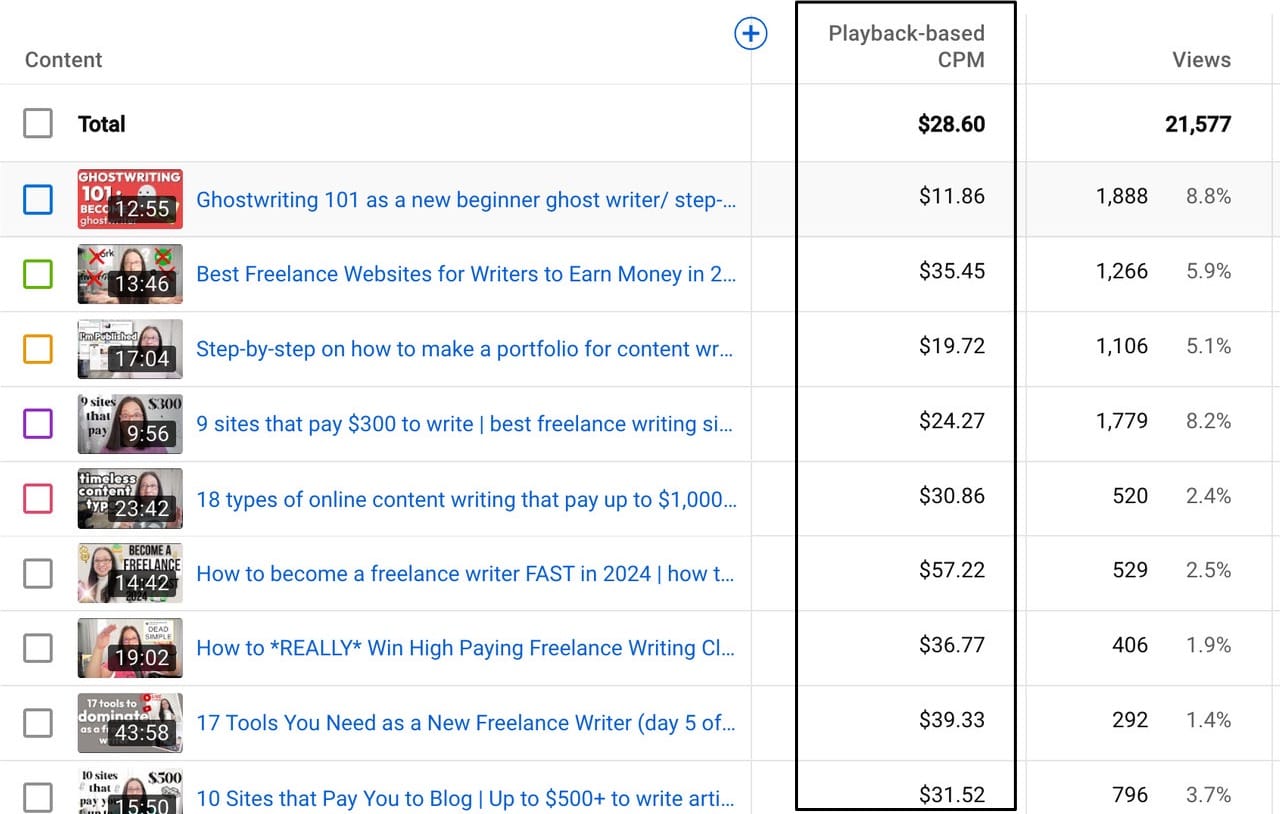
The estimated revenue you receive is the revenue per mile (RPM).
Your RPM is derived from various sources, including advertising, channel memberships, YouTube Premium revenue, Super Chat, and Super Stickers.The amount varies with each video, with different topics, and with the type of audience that watches your videos.
Another way to get ad income is through short-form content or YouTube Shorts. The eligibility requirement for this method is 10 million short views in 90 days. YouTube has been pushing out YouTube shorts since launching them in 2020. It can be a straightforward way to generate more views on a new channel.
For example, I don't have a dog and I don't watch dog YouTube videos, but this one Short became viral partly due to the curiosity in the title and the music in the video – and was in my feed.

If you have a knack for creating entertainment videos, consider publishing Shorts to monetize your YouTube channel.
The second monetization method is with channel memberships.
YouTube Channel Memberships
With a minimum of 500 subscribers and 3,000 watch hours, you can offer a channel membership where subscribers can pay a monthly subscription fee for access to perks like emojis, badges, and subscription-only content.
After monetizing your channel using either method, you can set up Super Chats and Super Stickers for your Live Streams.
Viewers who watch your live stream can pay for a Super Chat, highlighting their comments within the live chat. Viewers can also pay for Super Stickers, which are animated images displayed in the live chat.
8 Ways to Successfully Monetize YouTube Videos Outside of the YouTube Partner Program
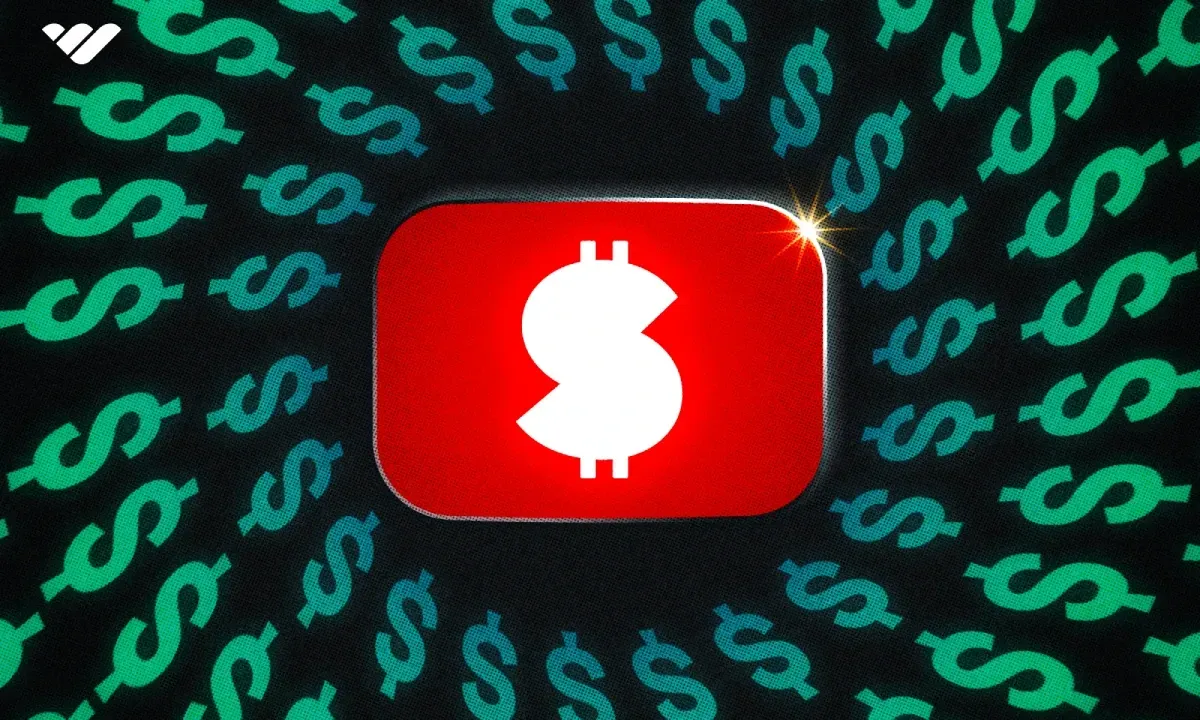
As you can see, generating thousands from display ads is more of a myth than reality. Many creators find that ad revenue alone isn't as lucrative as it seems, even with all the monetization features on the YPP.
So, what should a new YouTuber do? When I started my YouTube channel, I planned to use it as part of my business's sales funnel.
This meant that instead of focusing on growing my channel or subscribers, I was working on growing my income. For smaller creators, this is how their channel should function.
But how do you do this? Here are eight key ways you can start monetizing your YouTube videos.
1. Affiliate Marketing
Using affiliate marketing on YouTube has increased by 200% in the last five years.
It's a popular monetization method and easy to set up.
Finding and joining relevant affiliate programs through companies or affiliate networks are the best for beginners. You can check if a product you use or that your audience would benefit from by running a Google search of the product name and a term like "referral program."
From there, sign up for the referral program, and you'll receive a custom trackable link for affiliate marketing.
For example, if your YouTube channel is centered around skincare, you can become an affiliate for Ziip and then create a before/after video about it.
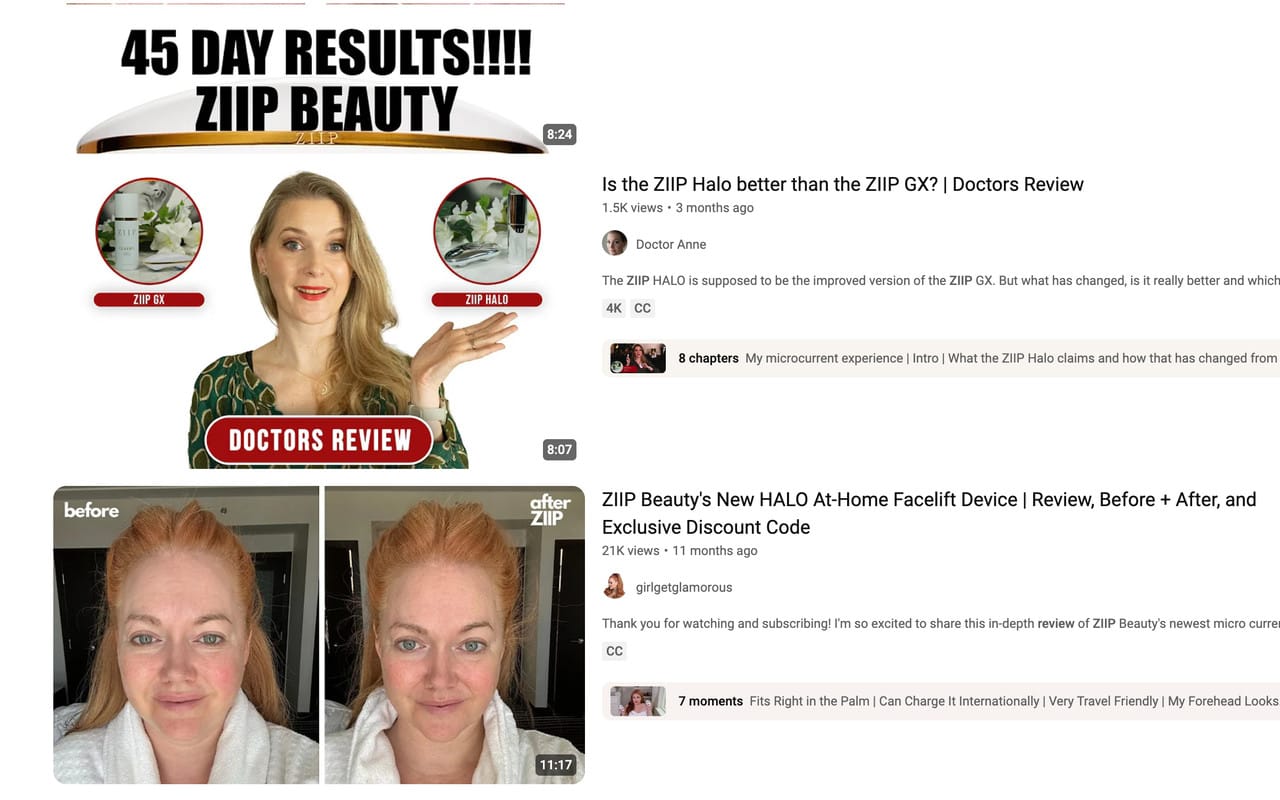
Creating affiliate marketing videos demonstrating a product or service helps consumers in their decision-making process. Over half of consumers use YouTube to help them decide whether to purchase a product.
To ensure you make daily conversions of your affiliate products, add them to the description section for every video. Many lifestyle vloggers do this, as the main intent of their videos is about what the vlogger does in a day, but they may use products or wear brands that their YouTube audience may want to purchase.
For example, Tiffani Beaston of Beauty and The Beastons' YouTube channel makes sure to add relevant affiliate links to all the products she shares in her day-in-the-life videos.
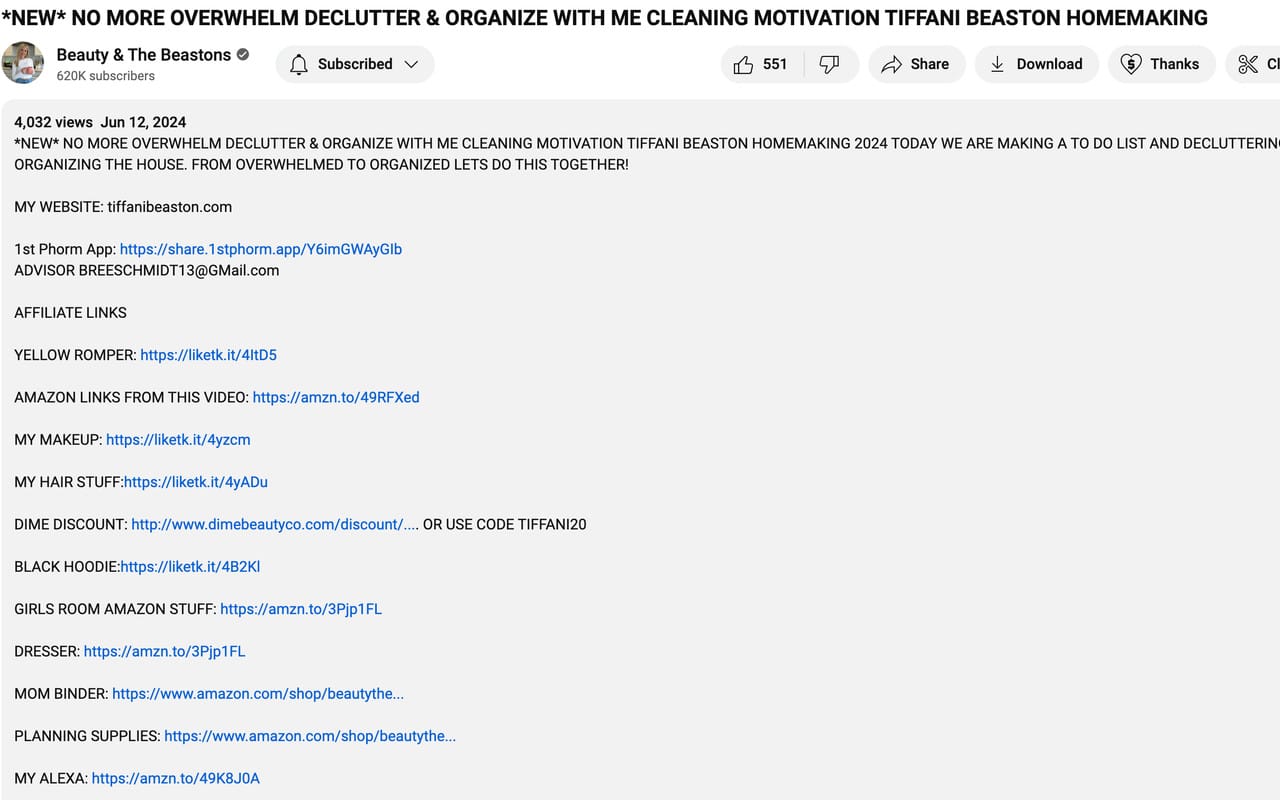
2. Sponsorships
Securing a sponsorship is a goal for many YouTubers.
According to Statista, the money you generate from sponsorships varies according to subscriber counts.

A sponsorship is when a company pays creators or influencers a flat rate for an ad slot within their YouTube video. This is different from affiliate marketing, whereby if a person clicks on your affiliate link and completes a sale, you will receive a small commission.
However, many companies that offer sponsorship campaigns will also have affiliate programs, helping creators earn even more money for each video they publish.
There are two methods for sponsorships:
- Companies reach out to specific creators
- Creators pitch specific brands
Big brands like Epidemic Sound and Wayfair or smaller brands like Helix Sleep or Blinkist often allocate an influencer budget and will seek out popular creators to collaborate with.
Many of these creators publish YouTube videos around a topic and in the video will talk about their sponsor product or service that's relevant to the video.
For example, Kathryn Snearly of Do It on a Dime often discloses sponsorships at the beginning of her cleaning and organizing videos.
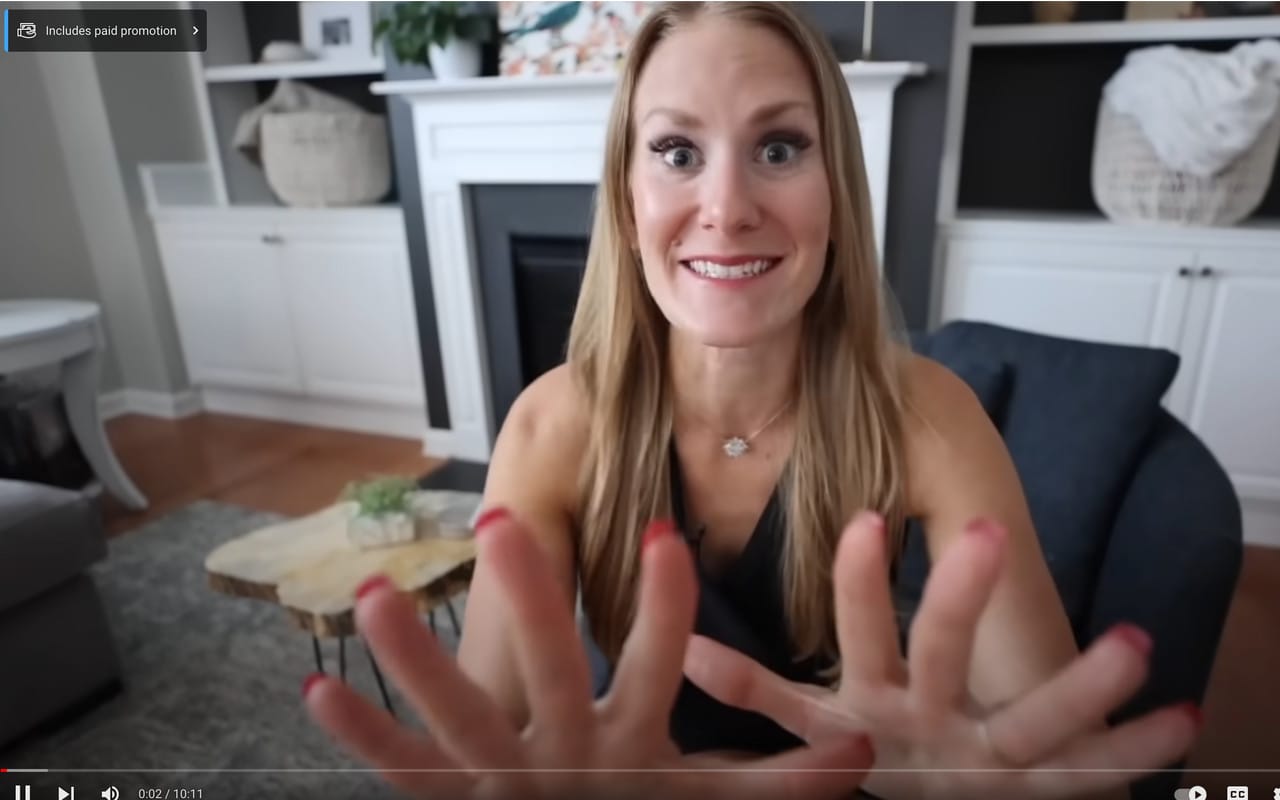
There's a card in the upper left-hand corner of her video indicating that a portion of it is a sponsorship and letting her audience know that the video was paid for.
Kathryn also tells you this and who the brand is, ensuring she gives full transparency to her 2.3 million subscribers.
But is this monetization method viable if you're a new YouTuber without a large audience? Yes. Brands also want to work with creators with less than 1,000 subscribers.
How? Those creators pitch specific brands and have a very niche audience. For example, while you can gain sponsorships in the budgeting niche, if your audience is niched to budgeting for active-duty military, for example, you'll have a better chance at earning more per campaign than a budgeting audience from various backgrounds.
Once you find a brand you want to collaborate with, do some research or guesswork about their specific objectives. For example, a UK brand may want to reach a US audience, or a company may have a new product for moms.
With this information, you can tailor your pitch to meet those goals or objectives since you don't have a large subscriber base.
Finally, consider pitching unique campaigns like co-branded content, collaborative giveaways, or challenges. These ideas should tie into the company's specific objectives, such as awareness, repurposed content, or conversion campaigns.
3. Digital Downloads
My business sells digital products like templates, eBooks, planners, and workbooks.
You can create small downloadables over the weekend and sell them for a low price. This can help you see what your audience needs, and if they need more help, you can provide other products at a higher price point.
To maximize sales of your digital products, create related videos. For example, I have an eBook about Pinterest marketing tips for bloggers called 15 Genius Pinterest Secrets for Bloggers.
Whenever I do a video about Pinterest, I will share my eBook and put a link to my eBook in the YouTube description.
If you have more than one digital product, you can link it to your shopping page or whop and walk through your products in your videos. Video walk-throughs are also an effective way to make sales. You show viewers what the product is, how to access it, and what they can get out of using it.
To create a digital product like an eBook, find an idea that is a challenge or a problem with your audience. When deciding on my eBook topic, I noticed many bloggers were losing traffic to all the recent Google updates.
I knew that Pinterest was a great method for consistently generating traffic, and I figured that if I could share some "secrets," my audience would find that highly valuable.
Once you have the topic and chapters of your eBook, you can design it in Canva or use an eBook template from a marketplace like Creative Market.
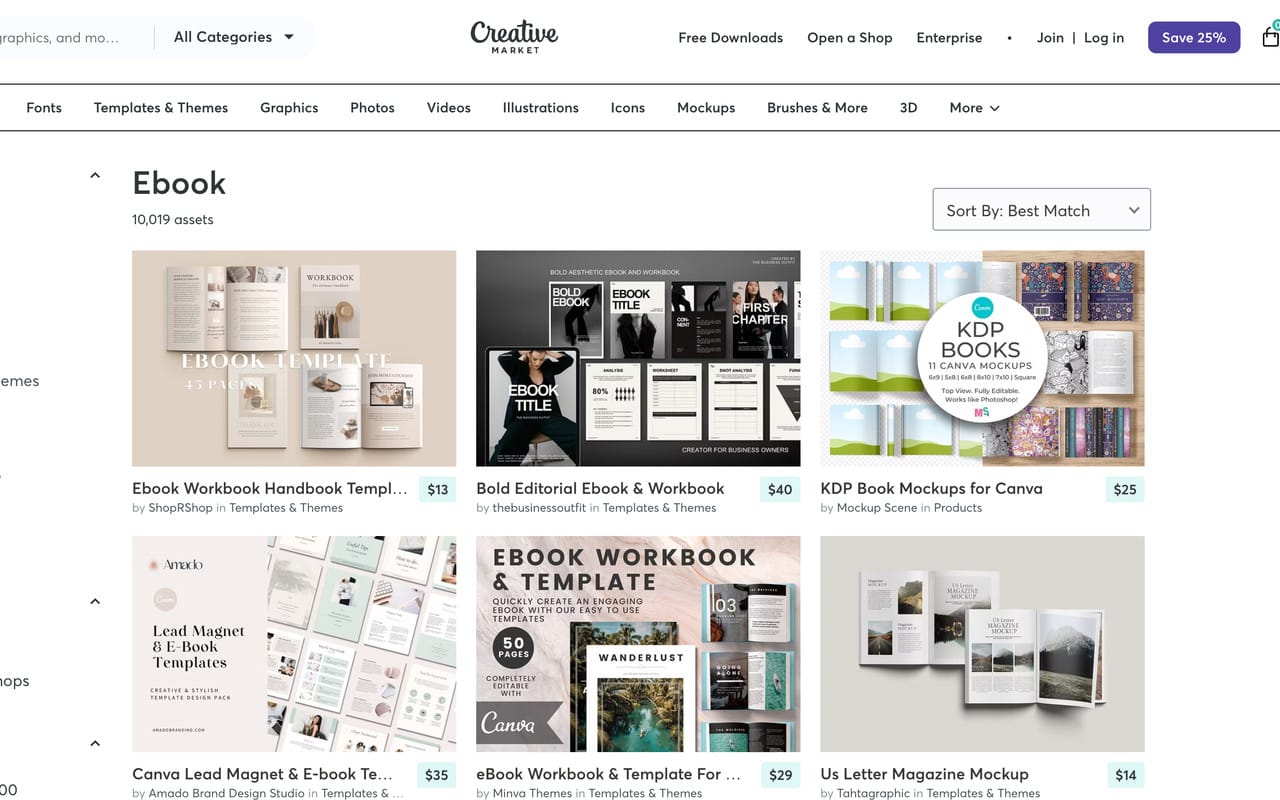
From there, you can upload your PDF eBook to Whop and set a reasonable price.
4. Donations
A popular type of YouTube channel is a reaction channel.
Global Media Insight shares that songs are the five most popular videos people watch.
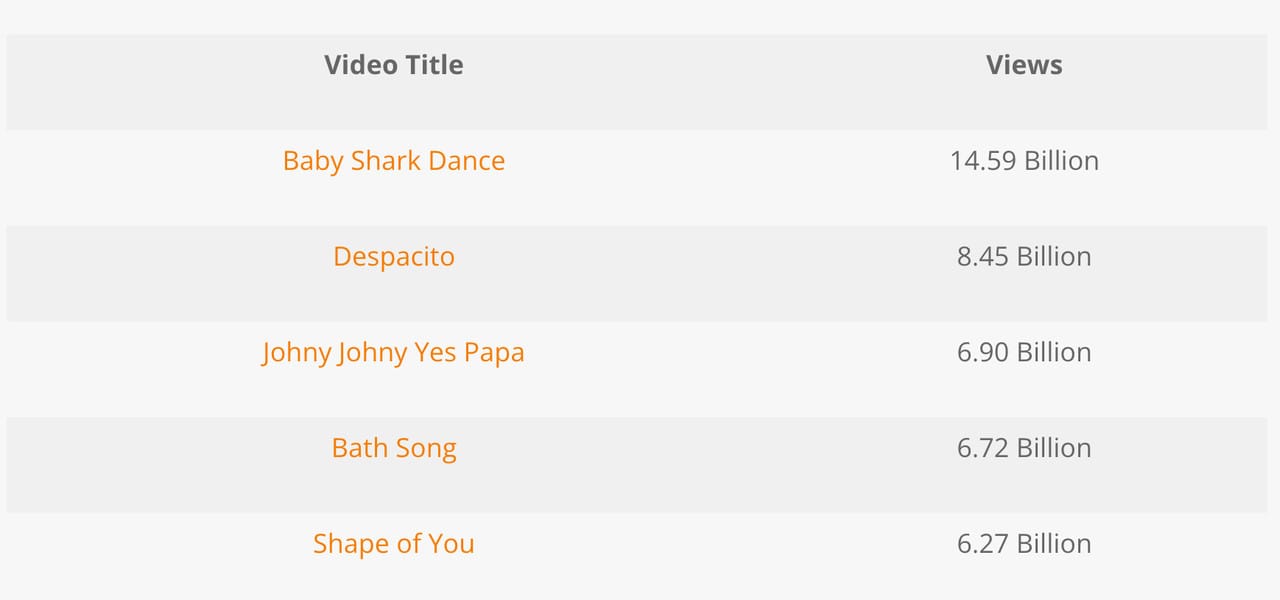
With this popularity, it's no wonder many people want to start a channel to react to music or entertainment videos. But creators who publish copyright videos or someone else's video (e.g., the music video they want to react to) cannot monetize it on YouTube.
So, how can you monetize YouTube videos with copyrighted music?
These creators can use other monetization methods, such as donations, to earn money from their videos.
For example, Knox Hill is a rapper and reactor. His channel has 1.29 million subscribers, but it isn't monetized in the YPP.
So, to earn money from all the hard work he puts into his channel, he spends a few hours live streaming where he asks for donations.
The donations allow viewers to request songs Knox can react to. He has a donation tally at the bottom of his video, and after a while, if there are too many donations, he shuts it down.
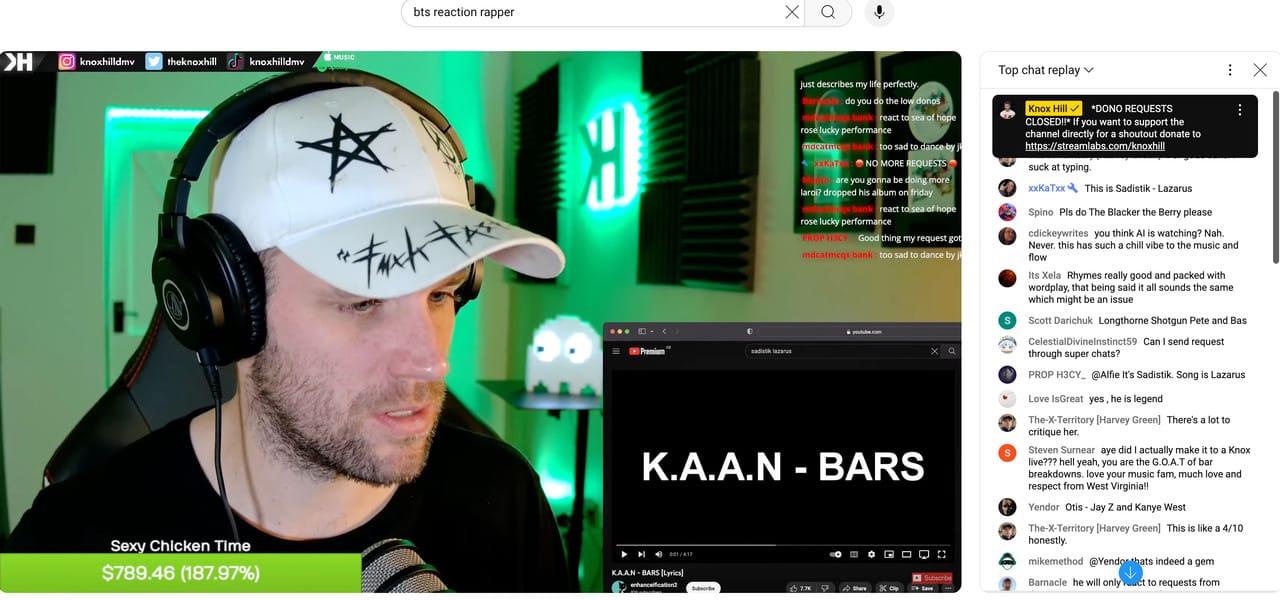
To enable donations, use a third-party tool like Stream Labs. Sign up for an account, fill out the proper information, and configure your channel before going Live. Or, you can also accept donations in your whop - simply create a donation link with the 'Tips' and share it with your followers.
While you can start this with less than 500 subscribers (i.e., before Super Chats and Stickers are enabled), most reactors earn the most when they have thousands or hundreds of thousands of subscribers.
Tell your audience what's happening and provide a visual tally or marker to show that donations are coming in. Knox also has a pinned comment asking viewers to donate and later changes that to notify his viewers of the end of donations.
- Learn how to monetize a YouTube channel with Whop
- How to become a YouTuber & earn money with online videos
5. Print on Demand (PoD) Merchandise
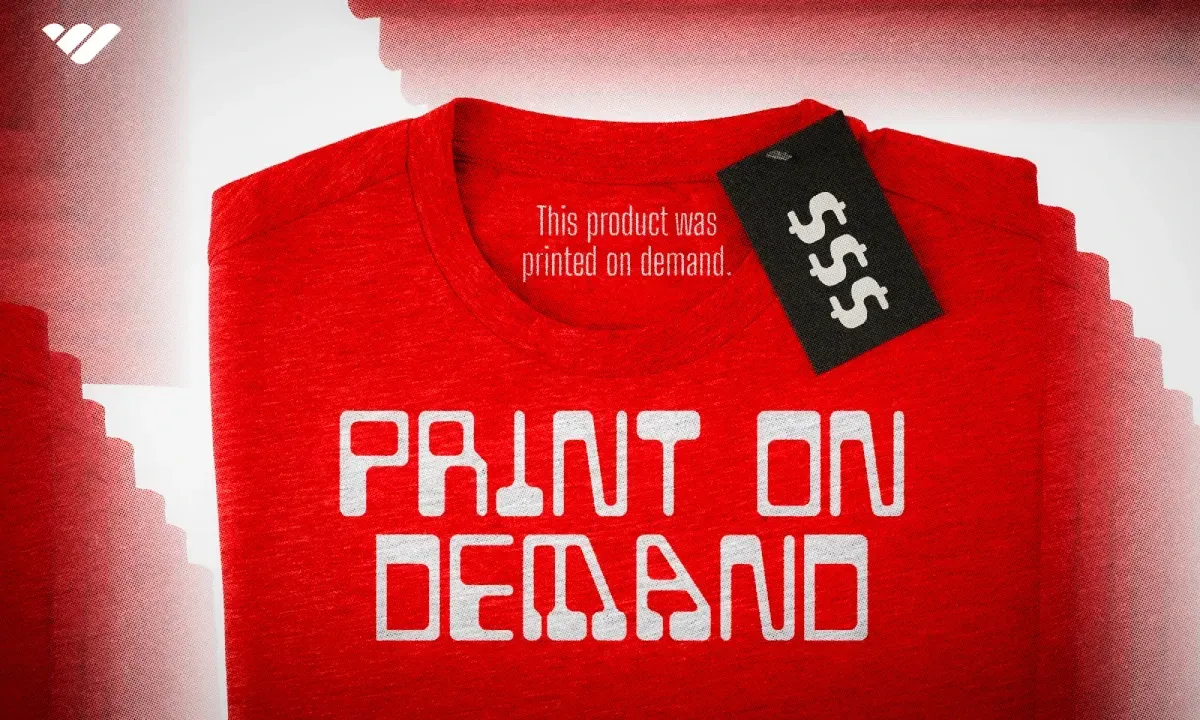
Print-on-demand is a popular method many creators use to generate consistent income. However, it takes 165 days to make your first $1,000, according to Printify.
So, it's a good idea for you to start with other methods, like affiliate marketing and creating a digital product, before you start selling merchandise.
Using a website like Printful makes it easy to sell merchandise since there is no stock or shipping to worry about.
Upload your designs, select the products you want to offer, and set your prices. Printful handles the rest, from printing to packaging and shipping, allowing you to focus on creating helpful YouTube videos for your audience.
Selling merch also reduces upfront costs and minimizes risks, making it a great option for YouTubers looking to start or expand their online store. To connect your store – or multiple stores – go to your YouTube Studio > Earn > Shopping. You'll then have access to YouTube's store tab, tagging options and product shelf.
The Store Tab automatically shows up on your home page menu bar. For example, Jessica Stansberry sells merchandise on her channel.
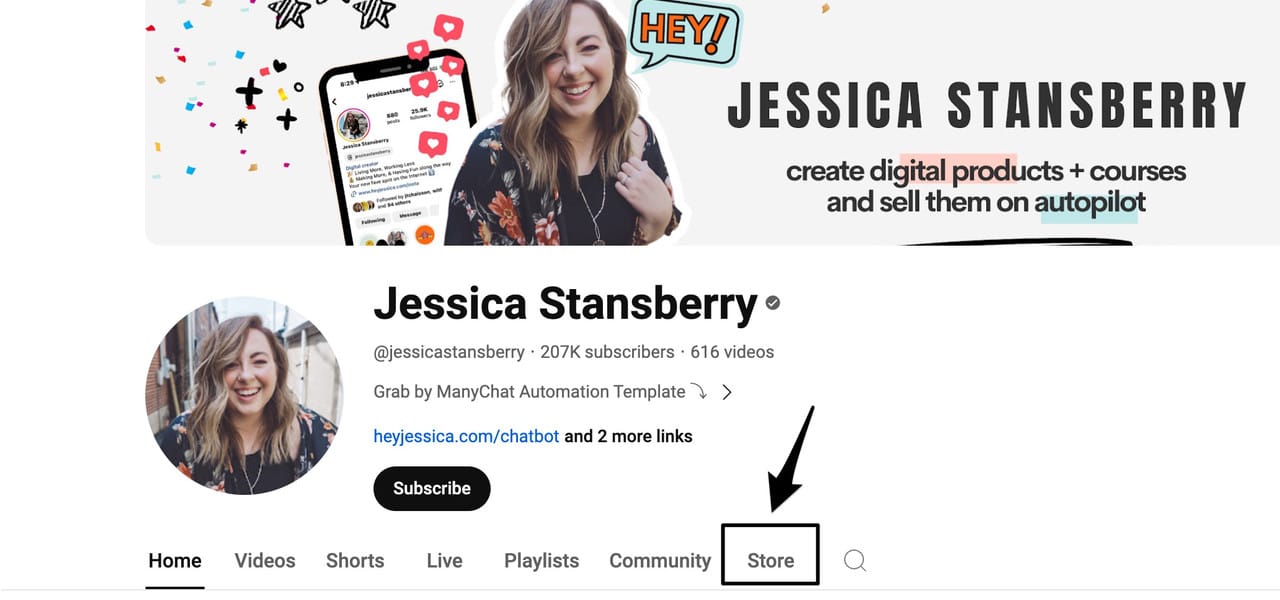
YouTube will pull from your store automatically and show your products. If you dislike the featured products, you can customize your page by going to YouTube Studio > Earn > Create Own Selection.
You can tag your products within new and existing videos or Livestreams by going to your video upload section and choosing adding products in the video elements area. Once you pick the products to feature, you will receive a notification on your video of the products.
For example, Cathrin Manning talks about decorating her new home and mentions specific products she's using by linking to products to her Target store.
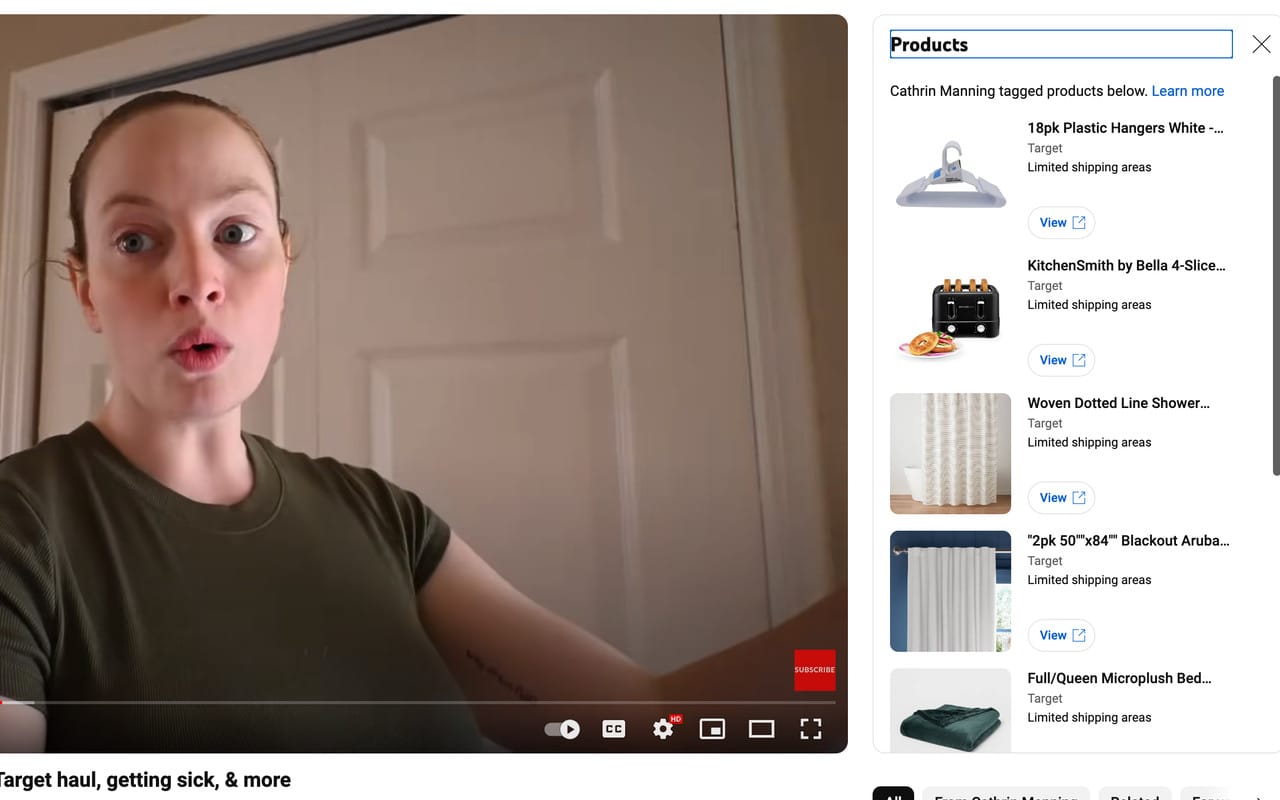
The product shelf is a popular way to share what you have in your store on every video you publish.
YouTube automatically pulls products from your store based on popularity, price, and availability.
Jessica Stansberry uses a product shelf to share her PoD merchandise.
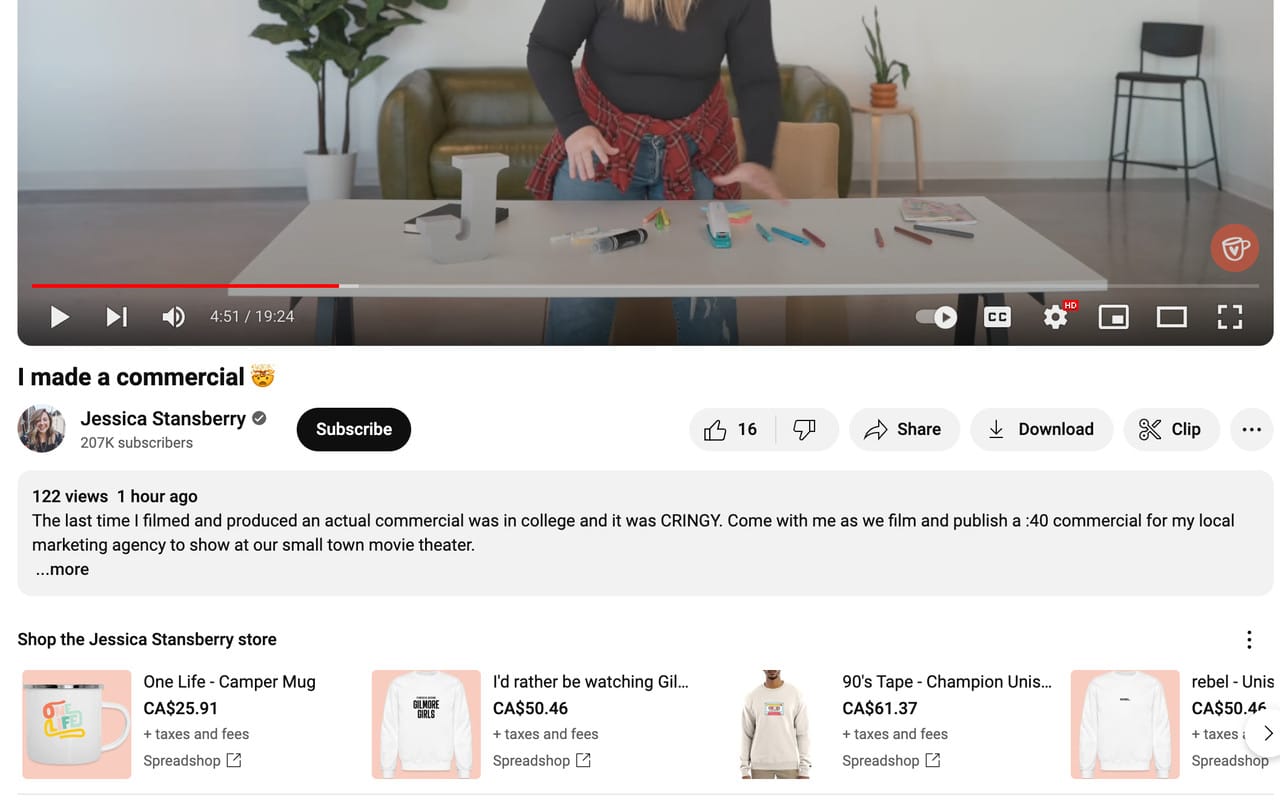
6. Paid Community
One of the best ways to make money as a YouTuber is to start a subscription to a paid community or a paid newsletter.
Platforms like Pateron and Whop allow creators to charge a monthly subscription fee for fans to access exclusive content, such as in-depth videos.
For example, singers and musicians create reaction and tutorial videos to gain massive views and subscribers. They also produce their own music and sell their albums on their channel, but to support those sales, musicians often start a paid subscription.
Beth Roars sells music and publishes music reaction videos. To support her channel, she sells merchandise with a product shelf on her videos and music and a paid subscription with links in her description.
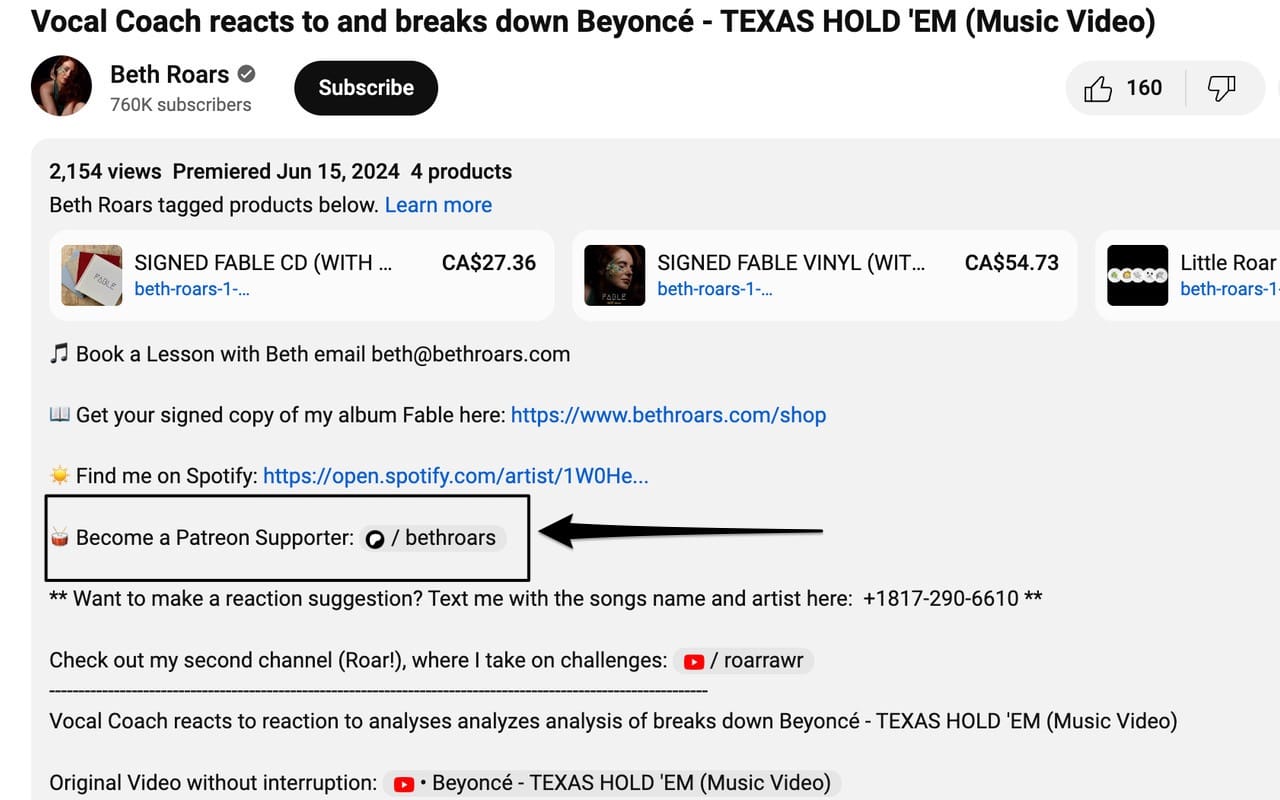
Meanwhile, Whop allows you to create your own whop - a space where you can host a community chat and forum, alongside any exclusive content, giveaways, webinars are more. Then, you sell access to this whop via a subscription.
Besides a private community, you can promote your paid newsletter. Viewers can sign up to a paid newsletter subscription to receive exclusive offers, promotional deals and tutorials.
I have a paid newsletter subscription, and use my YouTube banner and bio description to market my newsletter.
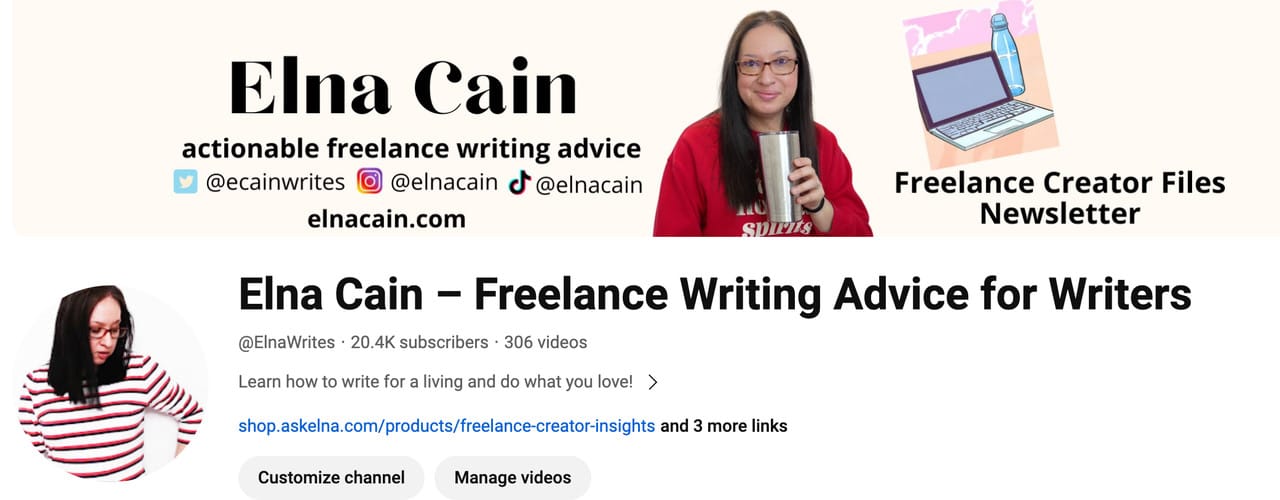
7. Courses
Creating a course is another way YouTubers can generate income with their videos. My freelance YouTube channel supports many course sales since my channel is educational and tutorial-based.
While I add links to my courses in the description of each video, what helps with selling courses on your channel is to create related video content. My course teaches people to become freelance writers online. The videos on my channel are about:
- An overview of how to start freelancing
- Steps for writing an article
- Pitching practices
- Common mistakes freelancers make
- How to find clients
- Using LinkedIn or Instagram to find clients
These videos offer snippets of my expertise, and viewers can find my link to my comprehensive course if they like how I teach.
Another thing I started doing was to limit my offers. I used to do affiliate marketing on this channel but found people weren't clicking on my course links. While affiliate marketing earns me a good income, course sales can earn me more, so I decided to link only to my course in all of my YouTube descriptions.
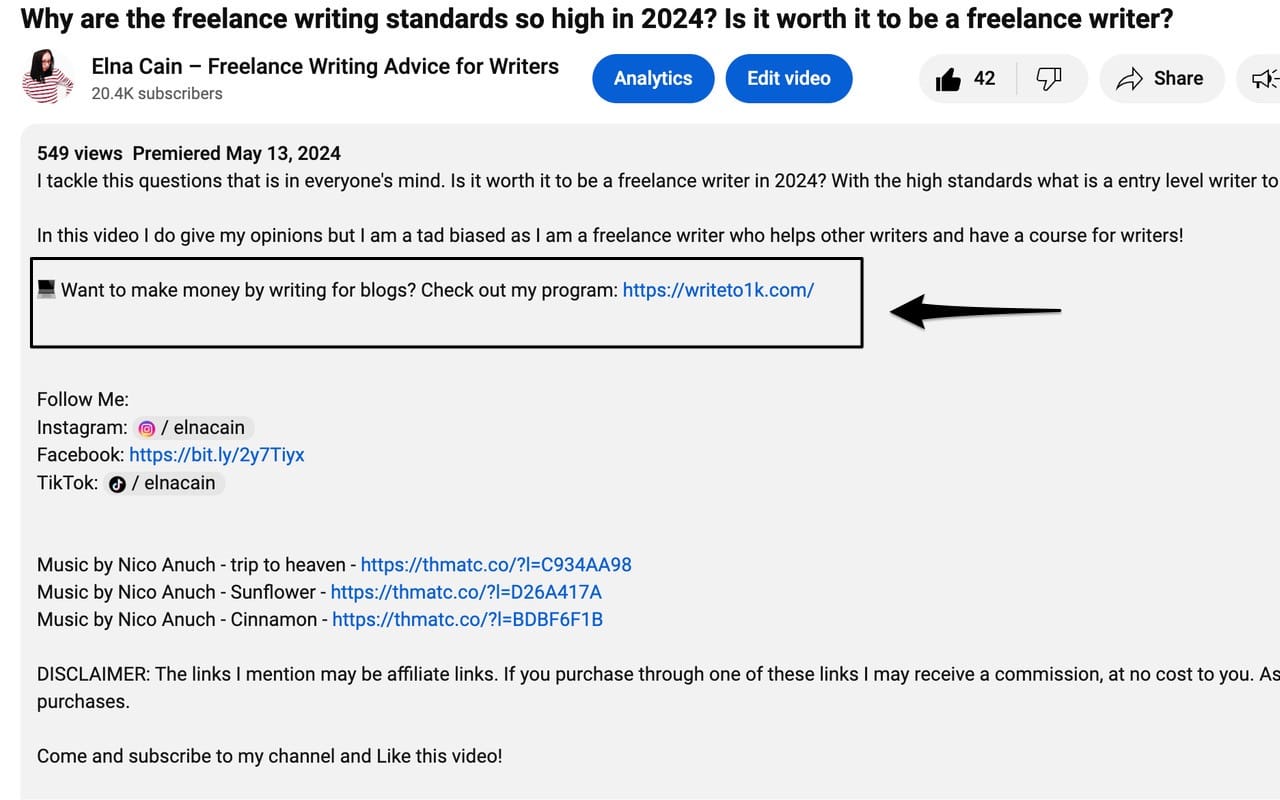
The best courses are ones where you can tap into your experience and show others how you did what you did. It can be as simple as creating an old money capsule wardrobe or taking an A-Z course on starting a dog bakery business.
You can film or write out your lessons and host them on a course platform like Teachable or Whop.
Once you have your link to your shop page, plaster that all over your YouTube channel as a way to make more sales.
8. Sell a Service
Another easy way to make money with your YouTube videos and small channel is with coaching and consulting services.
The Tilt's 2023 Content Entrepreneur Benchmark Reports says that 49% of creators offer a service to make money online. Whether you offer coaching or management services, YouTube is the platform to grow your business, and it works for small channels, too.
Catara Lane offers video editing services, and she regularly lands client work from her YouTube videos, even though she has less than 3,000 subscribers.
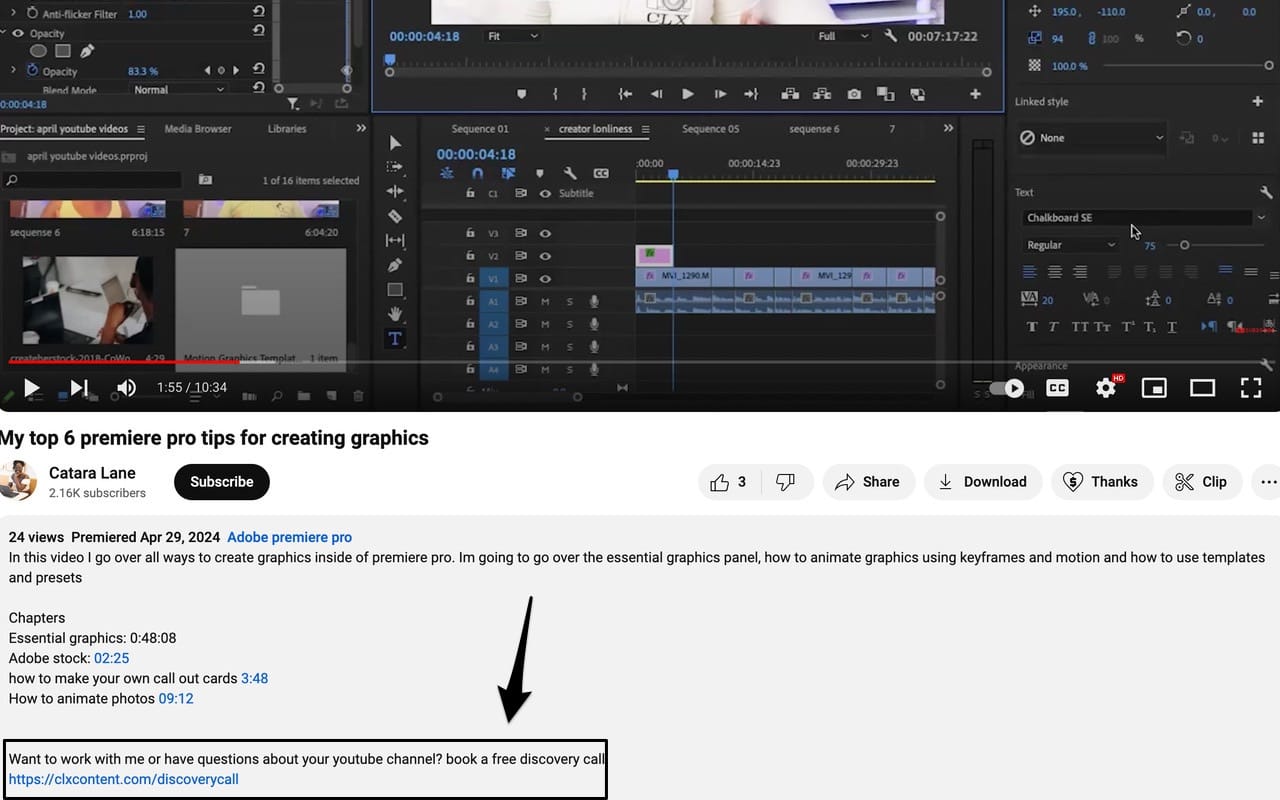
She offers a free discovery call to see if viewers fit her business well.
While it's best to market your service using a website, you can also use a Facebook page or Instagram account and Calendly to set up coaching or service calls.
Making Money on YouTube with a Small Audience
With all of these options to monetize YouTube videos, you may still be wondering how many views on YouTube you need - or how many subscribers you need - to start generating income.
Let's start with views. As mentioned, while you generally need 4,000 public watch hours or 10 million Shorts views, you can start making money with less than that - and, you can make more than YouTube pays creators, which is, on average, $0.01 to $0.03 per view.
How? Well, you can use any of the eight methods mentioned above, but for you to start generating money quickly, you'll need a strong marketing strategy. This might entail:
- Repurposing videos into TikTok videos, Instagram Reels, and YouTube Shorts
- Sharing your latest video on social media
- Starting a free newsletter to share new videos with your subscribers
- Supplementing your YouTube channel with a blog to get an audience from Google or social media like Pinterest
This strategy will increase the potential to earn more per view and income.
But what about subscribers? Well, to join the YouTube Partner Program, you need at least 500 subscribers to enable Super Chat and Super Stickers. Oherwise, you need 1,000 subscribers.
However, there are small YouTubers like Catara Lane who are making money on YouTube by offering a service or product and not replying on the YouTube Partner Program for monetization.
For this method to work, having a website and social media profiles will help as you can leverage that audience to help build your subscriber base on YouTube.
Monetize Your YouTube Channel with Whop
By now you should know that you need to diversify your revenue streams to maximize your earnings on YouTube. Relying on the YouTube Partner Program alone isn't enough for the average creator to successful make money with a YouTube Channel.
That's where Whop comes in. With Whop, you can create a central hub for your audience (known as your whop), offering paid content, a subscription-based community, courses, ebooks, and digital downloads.
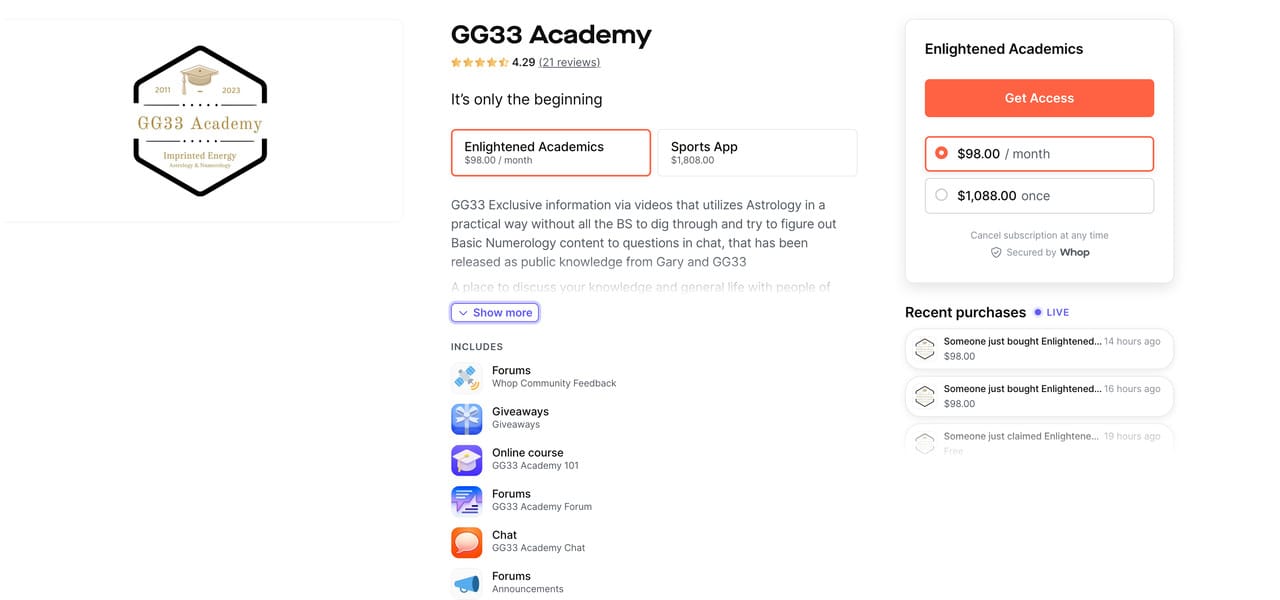
You can also accept donations using the tip app, run sponsored giveaways with the giveaways app, and host paid live sessions with the videos app.
By leveraging these various tools, you can build a robust and sustainable income from your YouTube channel. Grow your audience, put your whop link in your bio, and funnel them to your whop where you can offer a whole range of digital products and services that will keep your audience engaged.
FAQs:
How Do You Make Money on YouTube Without Making Videos?
If the thought of being in front of the camera, shooting and editing YouTube videos consistently, is overwhelming, is it possible to make money on YouTube?
Yes, there are a few ways.
If you know how to make soundtracks, you can sell your music to YouTube creators. Upload your YouTube background music to YouTube Music through a third-party platform like iMusician.
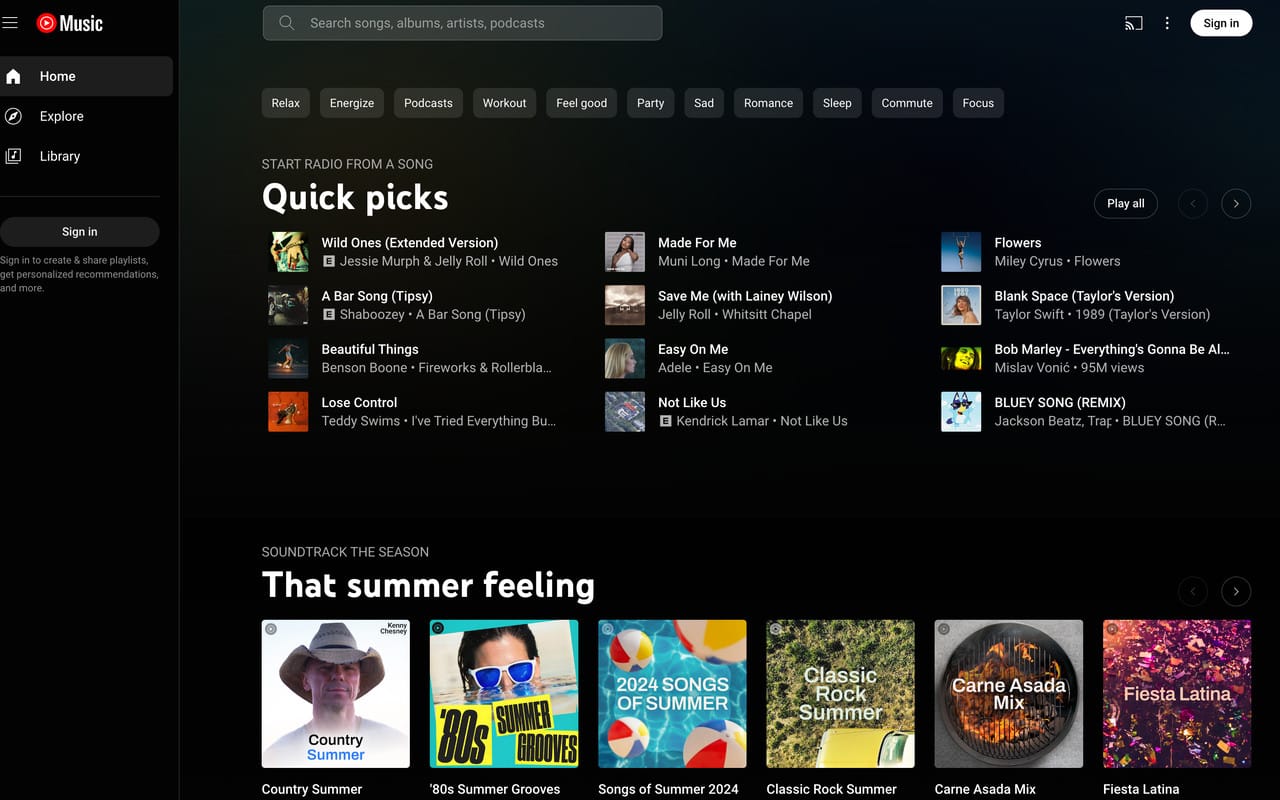
Another way to make money without making YouTube videos is by offering video editing to YouTubers.
You can visit YouTube channels and check out their video quality, thumbnails, and content schedule to see if they would benefit from a YouTube editor.
Market your service on a freelance marketplace to gain more clients who need help making engaging videos.
The final way to make money on YouTube without making videos is to start a faceless YouTube channel.
You can start a faceless educational channel, review channel, or entertainment channel and then hire out a:
- YouTube script writer and voice actor
- YouTube thumbnail designer
- YouTube editor
If you want to be more hands-on, you can control the script writing and be the voice behind the faceless channel.
How Many Subscribers Do You Need to Make Money on YouTube?
To join the YouTube Partner Program, you need at least 500 subscribers to enable Super Chat and Super Stickers; otherwise, you need 1,000 subscribers.
How Many Views on YouTube Do You Need to Make Money?
While the standard is 4,000 public watch hours or 10 million Shorts views, creators can start making money with less than that, buy selling merch, digital products and services, landing sponsorship deals, and affiliate marketing.
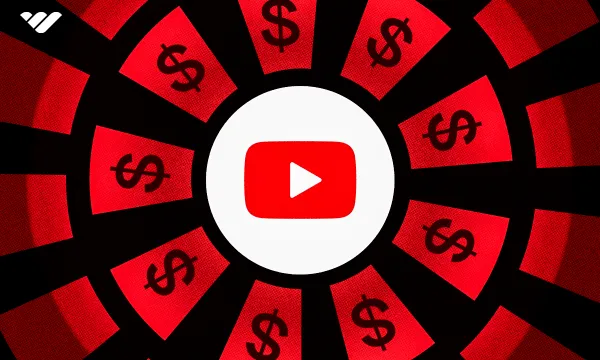

![40 Easy Ways to Make Money Online [2024]](/blog/content/images/size/w600/2023/11/20-ways-to-make-money-online--1-.webp)
